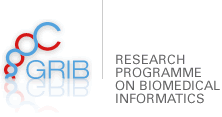
Thursday, 26th April, 2012, 11:00-12:00
Complementary tools in structural Biology at the European synchrotron
During this presentation I will rapidly review the various ESRF instruments offered to the structural biology scientific community. The philosophy for structural biology at the ESRF is mainly based on high throughput crystallography thanks to highly automated, robotized and standardized experimental setups (MX-beamlines). X-ray data collection on biological crystals has now become a routine, and the aim is to record and process diffraction data from hundreds of samples per day. However, in parallel the ESRF also put efforts in the developments of complementary instruments and methods to perform more elaborated experiments dedicated to specific samples. First, the “Cryobench” is a satellite laboratory which allows combining X-ray crystallography with UV-vis absorption/fluorescence spectroscopy when the samples are colored and/or fluorescent or with Raman spectroscopy when samples contain specific chemical bonds. Those techniques have proved to be powerful tools, linking the crystalline to the solution state, allowing the identification of ligand-bound or intermediate states of macromolecules, unlocking the interpretation of enzymes mechanisms, or studying radiation damage. We will finally present the High Pressure freezing bench which is the last methodological development at the ESRF. Biological crystals at the synchrotron generally need to be frozen at 100K to prevent radiation damage and rapid destruction under the intense X-ray beam. The classical cooling method requires a cryoprotectant (such as glycerol) which prevents water-ice formation damaging samples and spoiling diffraction data. The new HP-freezing method allows to cool crystal down to cryogenic temperature under pressure advantageously without cryoprotectant. Surprisingly, crystals frozen under high pressure have allowed obtaining new original results compare to classical freezing, such as phase transitions to higher crystallographic symmetry, stabilization of local conformations, modifications of protein/ligands interactions, and capability to make noble gas derivatives. This method is however not straightforward to use and reserved to specific projects.
Speaker: Philippe Carpentier, Structural Biology, European Synchrotron Radiation Facility, Grenoble, France
Room Xipre (seminar 173.06-183.01)


